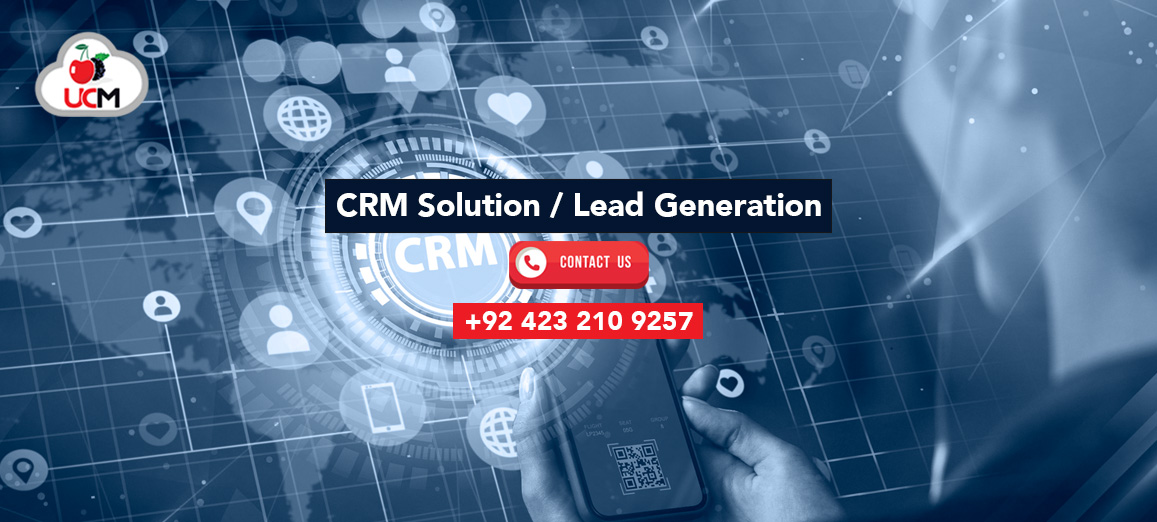Best Practices for Outbound Lead Generation Call Center
What is an Outbound Lead Generation Call Center?
When it comes to a call center business, the process is not only about managing inbound inquiries and offering solutions to customer issues. Rather, it also deals with outbound calling processes in particular lead generation is the most significant aspect of a call center’s success. A right lead generation strategy enables businesses to build brand awareness, reach new markets, expand their customer base, increase sales, and drive more revenue for their business. A Lead Generation Call Center helps companies identify and reach quality leads interested in their products and services. The process of lead generation is to make calls to leads to turn them into sales opportunities. Today, most companies prefer to outsource their lead generation processes to a specialized service provider to get the best results from their lead generation efforts. Let’s take a look at the best practices needed to implement in your outbound call centers.
Use Predictive Dialer Technology in Lead Generation Call Centers
Gone are the days when agents in the call center dialed numbers manually which was a time-consuming process. The arrival of auto dialer technology has streamlined and automated the whole process of making outbound calls. This technology has ensured that your sales reps spend less time in non-productive activities and remain focused on interacting with prospects and leads to convert them into sales. Call centers can use different dialing modes to make their outbound campaigns successful. These include predictive dialing, preview dialing, progressive dialing and power dialing. The predictive dialer automates the entire dialing process, reduces agent idle time and also increases the talk times of the agent. It means that your sales team spends more time interacting with leads instead of wasting time doing tasks manually. Moreover, AI and machine learning algorithms allow your sales team to get real-time data and historical metrics for a successful lead generation campaign.

Improve Your Redialing Strategy
The call centers should have a smart redialing strategy for the leads who did not pick up the call. It is important to consider that when you call someone more, they are less likely to answer your call. That is why call centers should adopt a strategic approach and dial smartly. Additionally, a right-dialing strategy not only enhances your contact rates but also allows you to generate more sales through fewer leads. It also prevents call blocking and you can maintain your brand reputation. For instance, you can determine the number of redial attempts and frequency based on disconnected calls, busy signals, unanswered calls, urgency and lead value. Likewise, agents can experiment with different redialing times to determine the answer rates. The development of a prioritization system can also prove effective based on potential value, lead quality and stage in the sales cycle. You can access customers using omnichannel outreach.
Take Benefit from Local Dialing & Call Monitoring
A low ‘Call Answer Rate’ is challenging for call centers as most people don’t like to answer unknown numbers. At that time, call centers can take advantage of local presence dialing to increase the likelihood of prospects answering their calls after seeing the local area code. You can use it as an effective tactic to make the Lead Generation Call Center process easier. Local presence dialing also reduces the number of declined calls, increases call pick-up rates and builds trust with leads. Besides, this tactic enhances the productivity of your sales team and increases the efficiency of your cold call campaigns. Call centers can also make their lead-generation process more effective through real-time call monitoring. The call insights further help in quality control and agent performance.

Conclusion
Ultimately, you can manage your Lead Generation Call Center processes efficiently through auto dialer, local presence dialing, real-time monitoring, advanced analytics and reporting, CRM integration and much more. You can take Cherry Berry UCM experts’ help to boost your outreach efforts and achieve your lead generation goals.
Here is How to Manage Lead Gen Process Efficiently
What is the Lead Gen Process?
One of the most important functions of any business marketing team is lead generation. This process requires proper strategies as a lack of structure can cause missing out on high-quality leads and a lot of revenue. A unique and distinct Lead Gen Process not only ensure direct communication with your target prospects and leads but also enables a company to attract loyal customers. Basically, lead generation refers to the process of finding leads and prospects and converting them into paid ones. In this process, your sales team particularly focuses on the individuals who have high intentions of purchasing your products. To achieve this purpose, marketers formulate their strategies to attract interested customers and increase the brand visibility and trust of the target audience. With a clear process of lead generation, it is less likely to miss opportunities or run out of prospects. Let’s learn different lead generation steps in detail.
1. Define Your Goals & Plan
Proper planning and defining your business goals is the first stage of lead generation. Make a list of goals you want to achieve and also the KPIs that you will use to determine your business progress. For instance, you can decide the number of leads you need in a month and can set your budget accordingly. The process of lead generation involves research, writing and analysis so it is also important to decide who will do which task. You can assign any of your team members as copywriters for the ad, email and social media, marketing team members to research on target audience, competitors and strategies and also members from the analytic team to access accurate sales data. You can also find leads by creating an ideal customer profile.
2. Do Thorough Research
Research is a critical part of any lead generation process to understand the source of leads and how companies can find more. By accessing the pain points of leads, companies can position their products as a solution before them. The more efficiently companies map their product value according to lead requirements, the more engaging the content will be. It is important to track the right people throughout their sales cycle to achieve success.
3. Create Engaging Content
Your potential leads and prospects should have a feeling that your content is directly speaking with them. You should create ads, social media posts, blog posts and infographics considering your customer’s needs. Moreover, you can optimize landing pages with strong call-to-action prompts to enhance conversion rates. You should also remain strategic at each funnel stage. For instance, in starting your team can focus on building awareness through SEO-optimized social media content and blog posts. Upon getting warmer, companies can send emails to lead to prompt conversion. In direct communication over social media, companies can convince leads and prospects how their products or service can resolve their particular issue.
4. Promote Your Content
Pre-targeting is a tactic of online advertising aimed to increase brand recognition within a particular audience. It also targets customers based on their preferences and behaviour. Companies use this strategy to warm up leads and organize them for sales pitch. Leads and prospects will click on your ads, call you or respond to your email when they already have some knowledge of your service or product. Moreover, companies that don’t have organic search rankings, can run Google ads campaigns. Although paid advertisements may not necessarily target the best leads, you can enhance the visibility of your business and bring traffic to your website. Another important method that is gaining traction today is social media marketing. You can increase your brand awareness through Facebook, LinkedIn, TikTok and Instagram.
4. Design Landing Pages
Landing pages are an effective strategy that offers great opportunities for lead generation by prompting leads into action either by scheduling a sales call or by offering contact information. However, most prospects and leads don’t take any interest in your product or service until they are convinced about its worth to them. This is why you should design compelling landing pages like mobile-friendly persuasive call-to-action prompts. Likewise, you can also utilize the potential of high-intent keywords to ensure effective communication with your audience. After developing these page options, you can run split tests to find out which strategy resonates more with your prospects.
5. Calls & Email Promotion
It takes a lot of time to convert leads into loyal customers, you can keep them engaged through calls and emails to keep them updated about your services. You can encourage prospects to try a product trial or free sample during outreach. Additionally, your sales team should remain ready for different email responses. Furthermore, you can use CRM or other marketing software to get the statistics of whether your leads have opened the email or clicked the link or not. This way, your sales team can prioritise their call lists. You can also set auto responses for feedback to show your interest in the lead’s opinion. While sending cold emails, you should also add an ‘unsubscribe’ link.
6. Pass Leads along Sales Carefully
When a lead is convinced to buy, they need individual attention. It is important to note that sending too many leads into sales very soon can lead to bottlenecks. There are chances that your lead may not take interest in your product at the level of investment while contacting them early can push them away. Your team can work on the lead-scoring process to pass off leads to sales at the right time.
7. Generate & Evaluate Reports
Although KPIs tracking is important during each phase of the lead gen process, reporting is also necessary after passing leads to the sales team. By following a lead journey over time, you can revise your strategy. You can create reports to show the number of emails sent or opened as well as unsubscribe requests. Businesses should invest their time in finding lost leads and think about ways to regain them through promotions, discounts and retargeting advertisements. You can find a proper system that can alert you about areas of opportunity or new buyers’ preferences and priorities.
Final Thoughts
Lastly, companies should learn through their lead gen cycle to remain prepared for the next one. Likewise, you can also automate repetitive tasks to keep things organized through lead generation software. CRM technology can also help in tracking lead information. If you are searching for a reliable service to run your lead generation process efficiently, consider Cherry Berry UCM.



